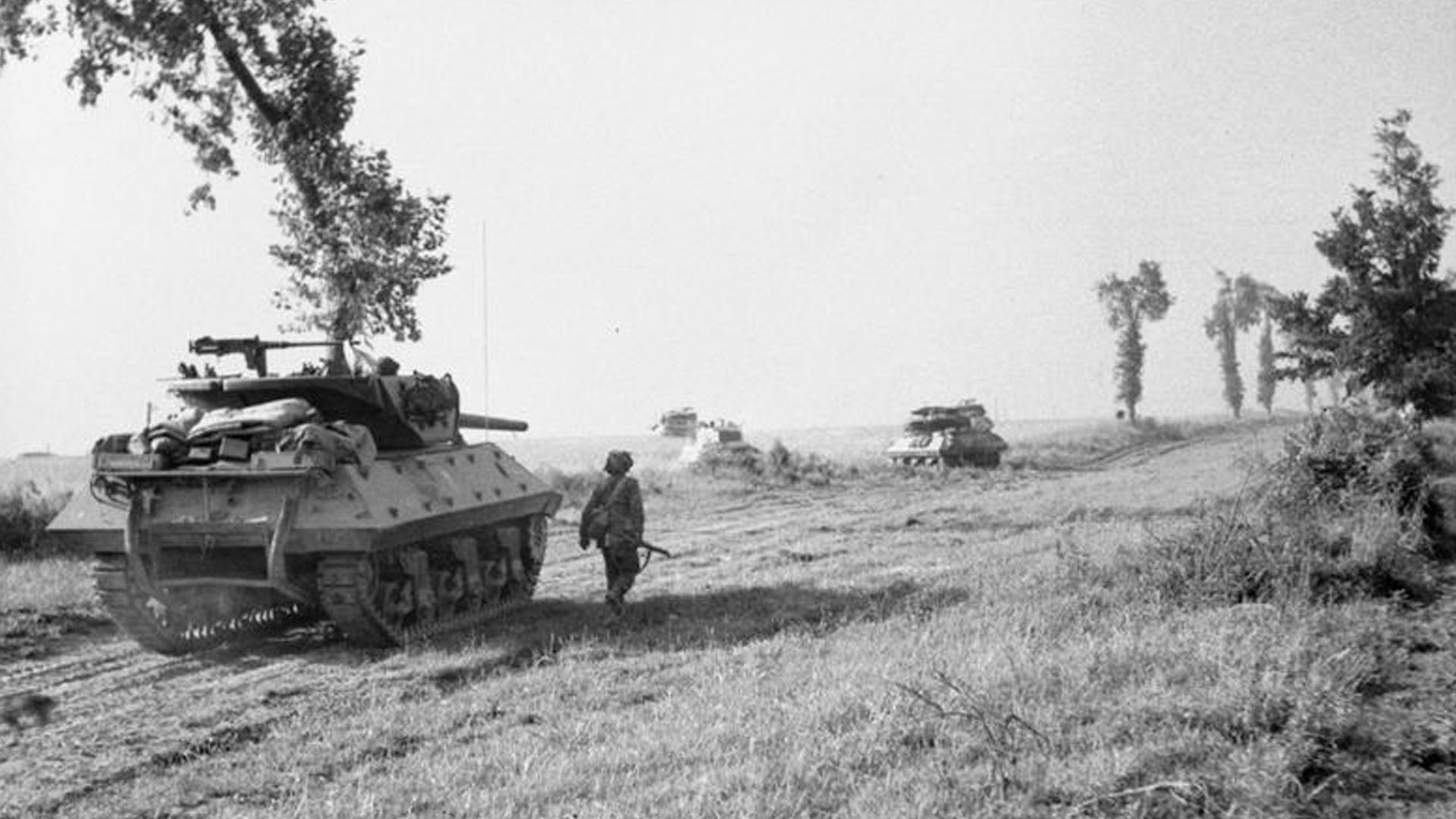Corporal Charles Stephenson (7016344) served in 2nd Battalion Royal Ulster Rifles during World War Two.
He was a medic with ‘B’ Company as they made the advance to Cambes-en-Plaine after D-Day. The company faced fierce opposition on 7th June 1944, but would finally take the woods and village two days later.
As a medic, Stephenson was in the thick of the action as machine gun fire, mortars and shells decimated the Rifles. On 9th June 1944, a 75mm shell hit one of ‘B’ Company’s Bren gun carriers. The carrier tore apart. Corporal Boyd and Private Hilde both sustained serious injuries.
The distorted metal of the carrier trapped Boyd’s leg. Charles Stephenson carried out a field amputation with a pair of scissors before applying a tourniquet.
Rushing to Hilde, Corporal Stephenson managed to avoid German bullets. Hilde, in terrible pain in his left arm and right leg, begged Stephenson to shoot him. The medic told him in no uncertain terms that he would patch him up and have him back on his way in no time. A Canadian tank took the injured men to the Regimental Aid Post and Stephenson went onwards with the battalion. Stephenson and Hilde met again about four years after the war. Hilde, missing his right leg was very much alive and well and enjoying a beer thanks to the battlefield actions of Charles Stephenson.
He was Mentioned in Despatches for his actions in Normandy in 1944.
Battle of Normandy
After taking Cambes-en-Plaine, the 2nd Battalion Royal Ulster Rifles moved on to Troarn and dug in in the face of stiff resistance. Three days of constant rain meant shelling from the Germans stopped. This gave Stephenson a chance to read his copy of Lilliput Magazine next to Private Woolf in their two-man trench. Fifty yards away from them was a German trench.
Woolf was a 38-year-old Irish man from Dublin with 7 children. Stephenson never understood why he volunteered for frontline duty. The battle at Cambes Wood shook the Dubliner and he began smoking again despite having quit years before. Charles reassured him the war would soon be over as rainwater continued to fill the trench.
As the rain lessened, the shelling began again and the medic received a call back to the Regimental Aid Post. Half an hour later, he returned to find Woolf in his end of the trench, the dry end.
As the two men waited, their trench took a direct mortar hit burying both of them in earth. Breathing from a pocket of air, Stephenson waited. Soon, he heard voices and a stick poked in the ground struck his helmet. Corporal Stephenson felt pain in his leg and the weight of the dead Woolf across him. The Dublin man had taken the full force of the blast.
The medic returned to the Regimental Aid Post, this time on a stretcher with a smashed tibia. He made it back to the coast and returned to England on board a hospital ship.
